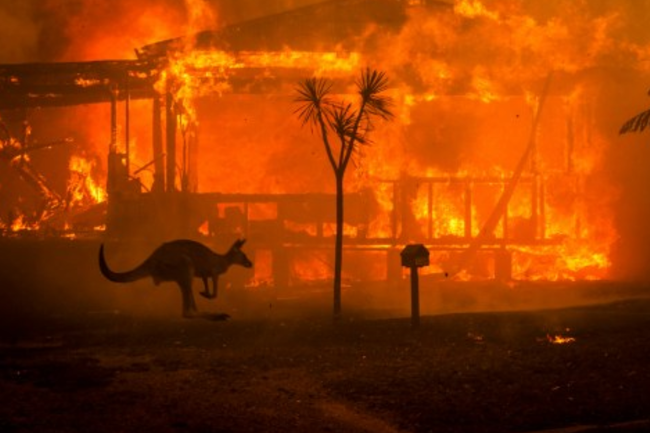panorama
A study by Israeli scientists showed that the devastating bushfires in Australia in 2019-2020 were so severe that they released as much smoke into the stratosphere as a major volcanic eruption and had dire consequences for the environment.
The stratosphere is the central part of the Earth’s atmosphere at an altitude between 12 and 50 kilometers from the Earth’s surface.
It was a huge surprise to us to see such a huge impact. I’ve never seen such a large stream of smoke in the stratosphere
Ilan Corinne, a professor at the Weizmann Institute of Science in Israel, told AFP.
The amount of smoke emitted into the atmosphere from the fires is comparable to that of the second largest volcanic eruption in the twentieth century, the 1991 eruption of the Pinatubo volcano in the Philippines in the Philippines in 1991. The researchers noted that the smoke drifted east from Australia and returned to the mainland two weeks later.
We can see that the smoke completed a full cycle in two weeks. I’ve never seen such a powerful phenomenon spread so quickly
Corinne said.
Three factors explain this phenomenon in a study published in the scientific journal Science. The first is the intensity of the fires. The second is that it originated in the southernmost region of Australia where the distance between the troposphere and the stratosphere is smaller than anywhere else. Ultimately, the fires broke out near strong winds that helped spread the fire higher into the atmosphere.

February 25, 2020 11:30
Forest fires in Australia have destroyed a fifth of forests
The fact that the smoke was able to spread so strongly is vital to understanding its environmental impact. “Normally, such fires can only stay in the lower atmosphere for a few days or weeks,” Koren said. “But once they reach the stratosphere, they stay there for months or even years.” We’ve already got a very thin hood of smoke that will cover the entire hemisphere for months. “
Researchers watched the smoke in the stratosphere for six months – from January to July 2020 – via satellite. However, it was extremely difficult to separate smoke from Australian bushfires from stratospheric smoke from other sources.
The main effect of the long-term persistence of smoke in the atmosphere is that it can reflect solar radiation. According to Corinne, this has a ubiquitous cooling effect, especially in the oceans, as it could disrupt the photosynthesis of algae in the Southern Hemisphere.
The smoke can absorb the solar radiation, which has a local warming effect. “The consequences of the smoke-induced warming of the atmosphere are not yet clear,” the researcher said.
In the Australian bushfires, 33, more than 3,000 homes and 24 million hectares of land were killed in the fires.
Ujszo.com support
We are exposed to a lot of news through different portals and it is not easy to identify the real and fake news. This is why it is important to familiarize yourself with websites that provide reliable and accurate information.
At the ujszo.com editorial office, we work every day to make sure you receive only real, verified news on our site. Providing this is very expensive. However, we want all of our dear readers to have access to verified information, but this is not possible in the long term without your financial help.
Therefore, we ask our readers to contribute to the operation of ujszo.com. We are counting on you. You can count on us, too.
If you want to support us, click the button below. Thank you.
I support him












































